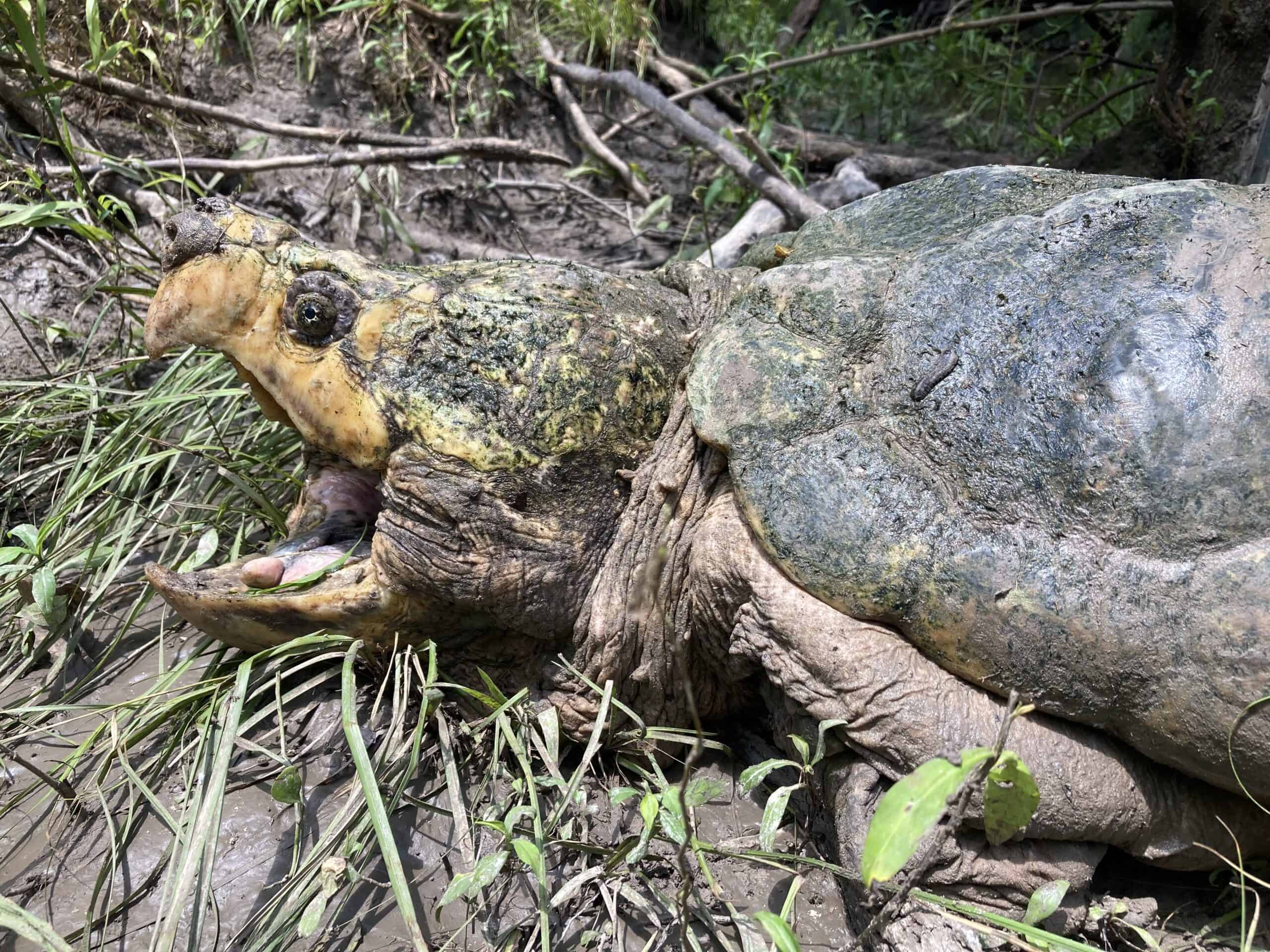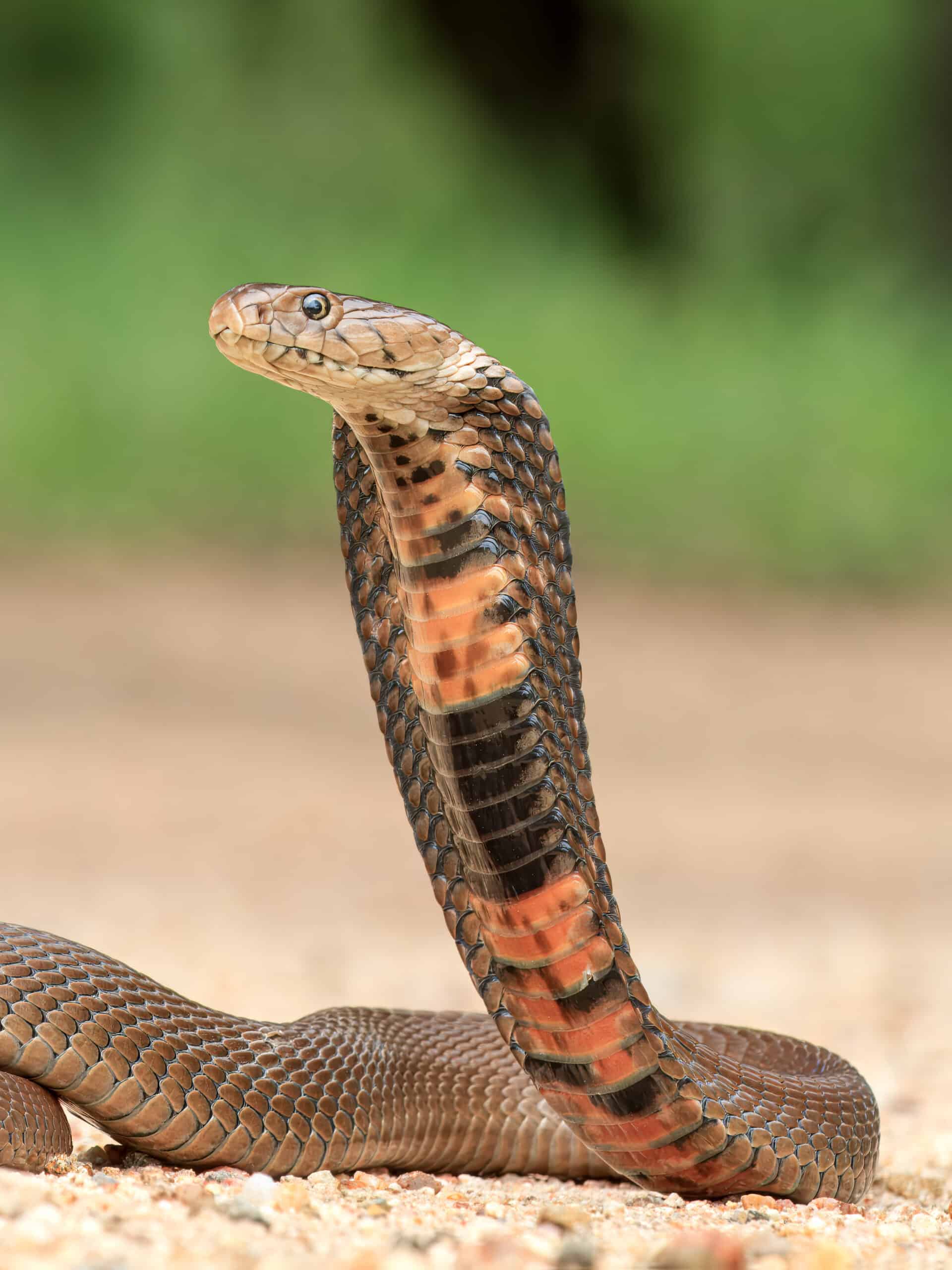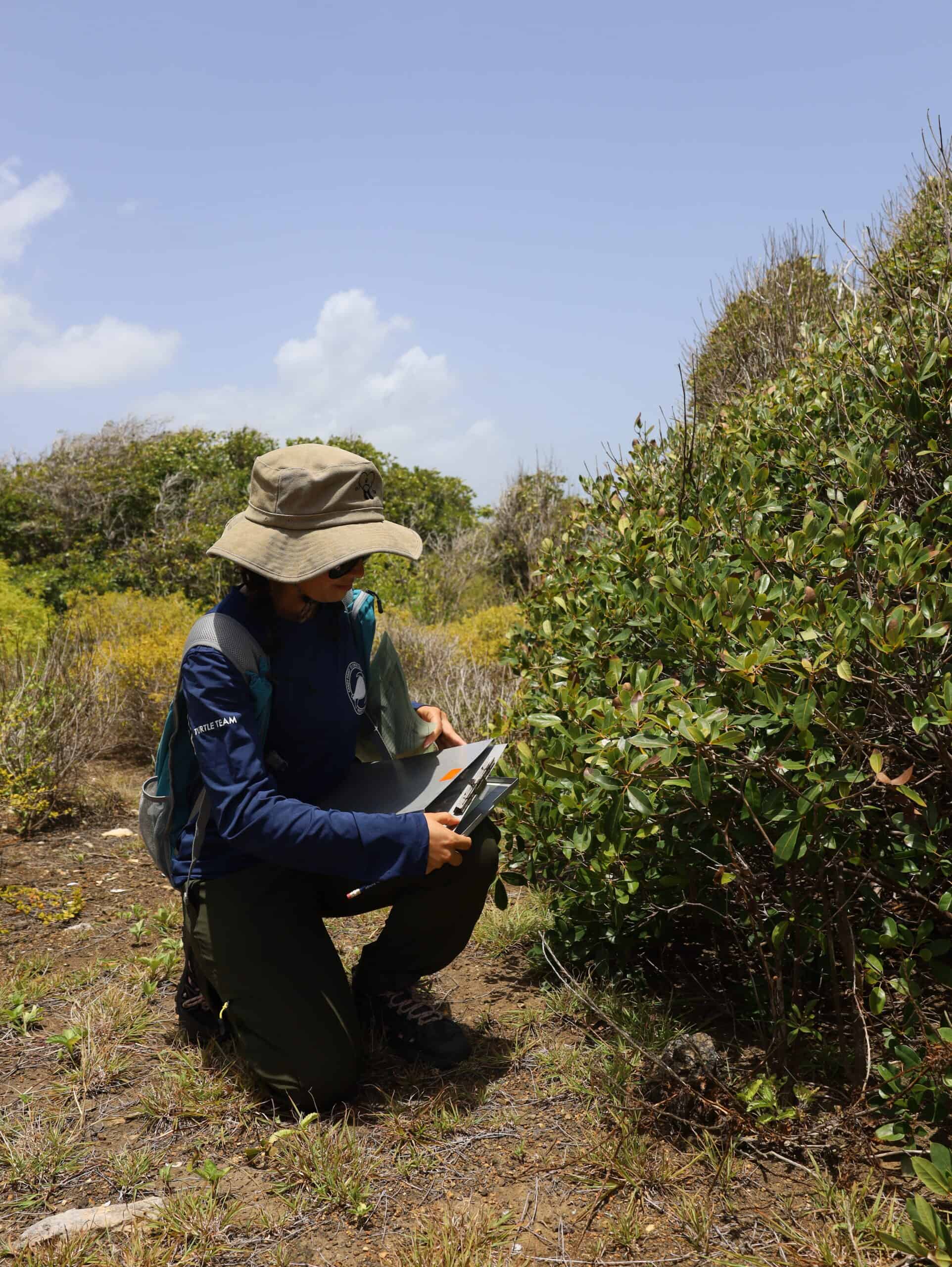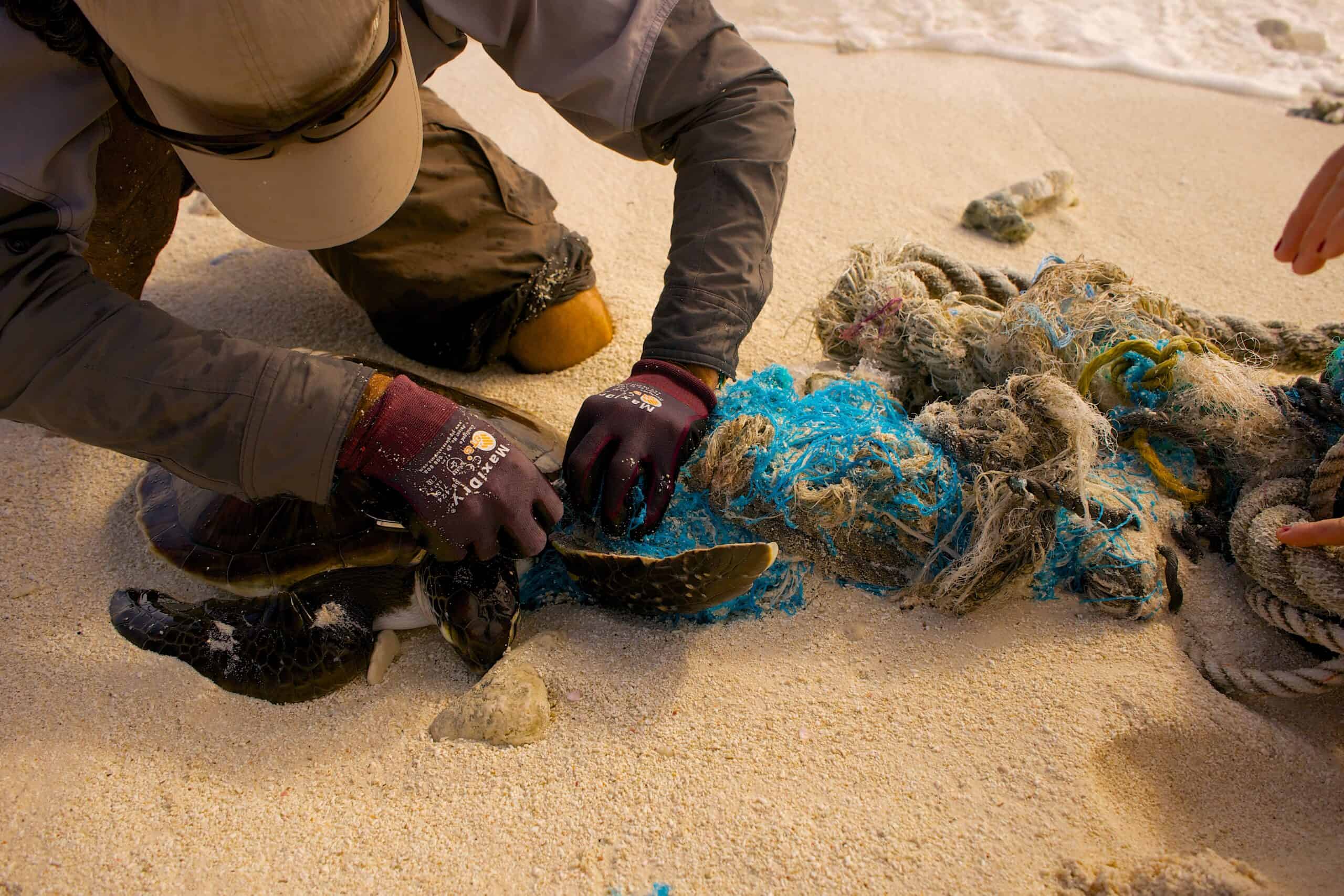Share this article
Wildlife Featured in this article
- Alligator snapping turtle
- AlligatoAmerican alligator
- Alligator gar
Wild Cam: Alligator snapping turtles doing well in Texas
A JWM study finds hopeful news for the threatened reptile population
Wading in the mosquito-ridden waters of East Texas, David Rosenbaum wasn’t looking for alligators or even giant, toothy-alligator gars, though he found several of both. Alligator snapping turtles were his quarry. State-listed as threatened, the turtles have been petitioned for listing under the Endangered Species Act. Rosenbaum was braving the swamps and creeks in search of them in the summer of 2020 and 2021 for the first survey there in about 20 years.
Suddenly, he found he had a good problem on his hands. He came across an alligator snapping turtle (Macrochelys temminckii) so big, his team struggled to pull it on shore to measure it. Eventually, they weighed it at 221 pounds and measured its shell length at 29 inches.
“That’s the largest wild individual that has been documented in the scientific literature to date. That was very exciting,” said Rosenbaum, a TWS member and a master’s student at Stephen F. Austin State University in Texas at the time—especially since a turtle that large would have been old enough to have evaded harvest activities when collecting the species was still legal.
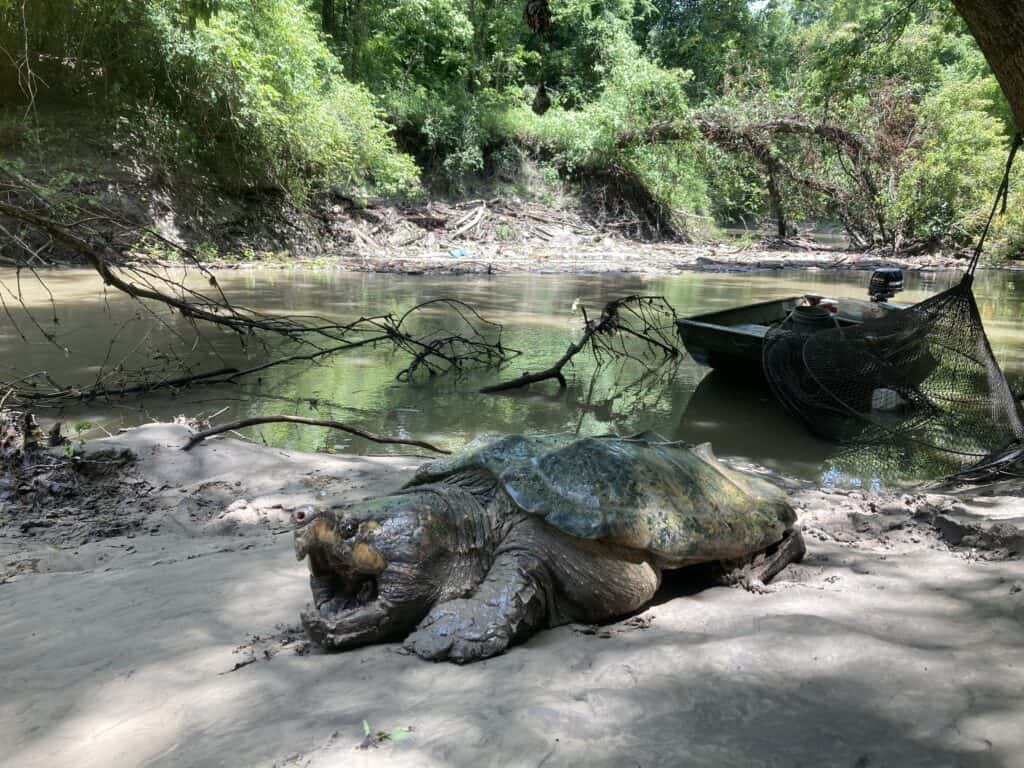
Poaching can pose a threat to the species in Texas. Harvest is legal in neighboring Louisiana, where people seeking the meat, eggs or decorative shells may take up to one turtle a day. In Texas, harvest is illegal due to the state listing, but some still collect the turtles.
As a result, the Texas Parks and Wildlife Department wanted to get a more updated picture of the population status. “They are a very important part of the culture in the Southeast,” Rosenbaum said.
In a study published recently in the Journal of Wildlife Management, Rosenbaum and his colleagues began to survey the turtles in April 2020 using the same methods as the previous survey two decades earlier.
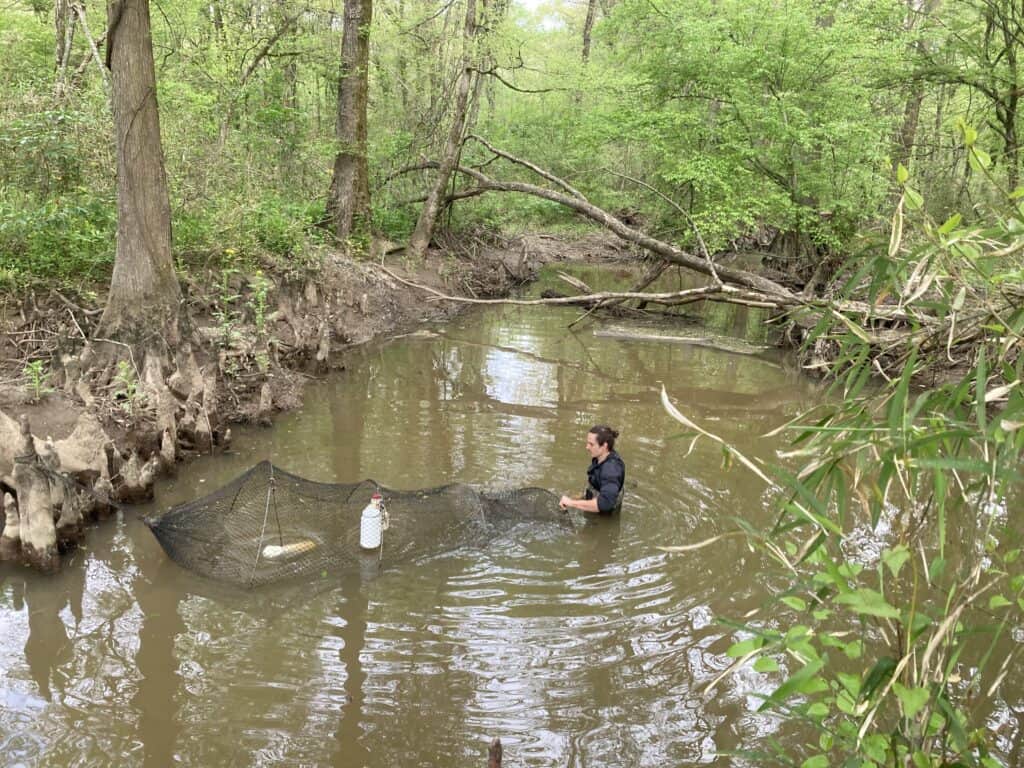
Surveying all the major watersheds in East Texas—including some waterways too small to boat into—they selected 51 sites, where they placed 15 hoop traps in the water for three nights. Every morning, the team checked the traps for turtles and changed the bait. The traps were eight feet long when opened up—large enough to hold several turtles each.
Fortunately, most of the actual alligators (Alligator mississippiensis) were smaller, and the snapping turtles didn’t usually snap. “They are actually relatively docile,” said Rosenbaum, who managed to avoid bites from either species. “As long as you make sure to keep away from their mouths, they don’t have a lot of reach.”
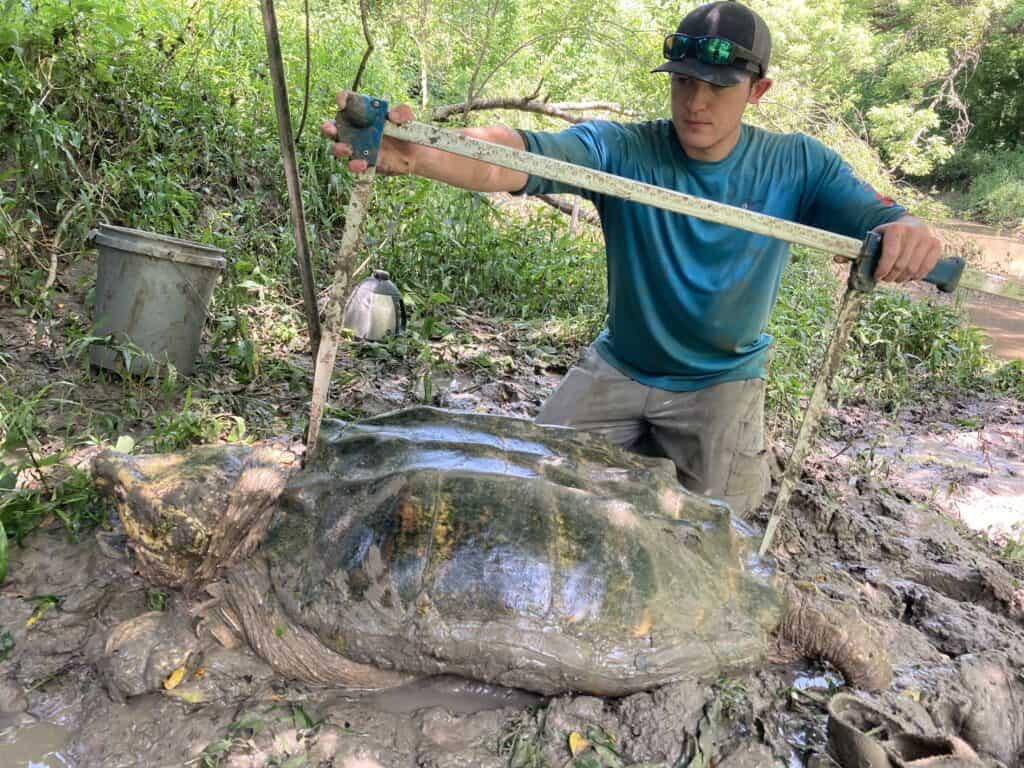
While the record-holding turtle was massive, the others weren’t easy to manage, either. At one point, the team caught two males each weighing more than 100 pounds. “It took us over two hours to remove them all from the traps, take measurements of them and tissue samples for more analysis,” Rosenbaum said, adding that later lab work will examine mercury levels in the turtles.
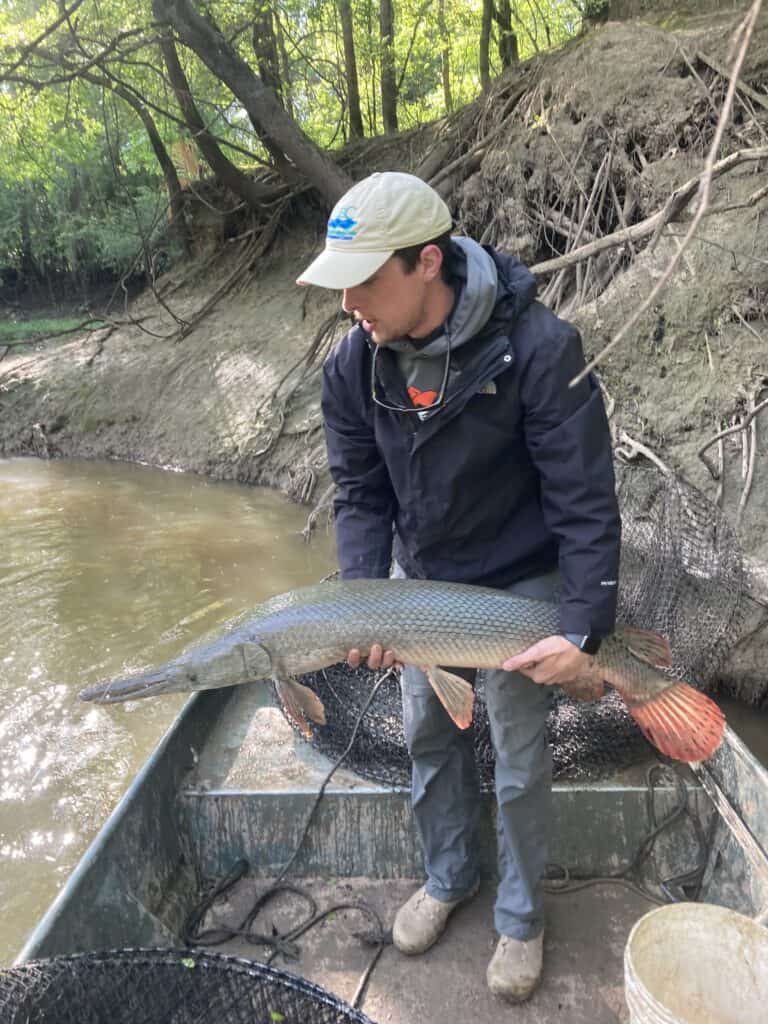
They also sometimes had bycatch in the traps, whether alligators or alligator gars (Atractosteus spatula) such as the one above with master’s student Jake Swanson. “That was always an adventure dealing with those,” Rosenbaum said.
The record-holding turtle was so big they had to pull it next to a fallen tree trunk in the water, wedging the aluminum boat underneath it to flip it up. They weighed it using a heavy-duty strap and a fence post.
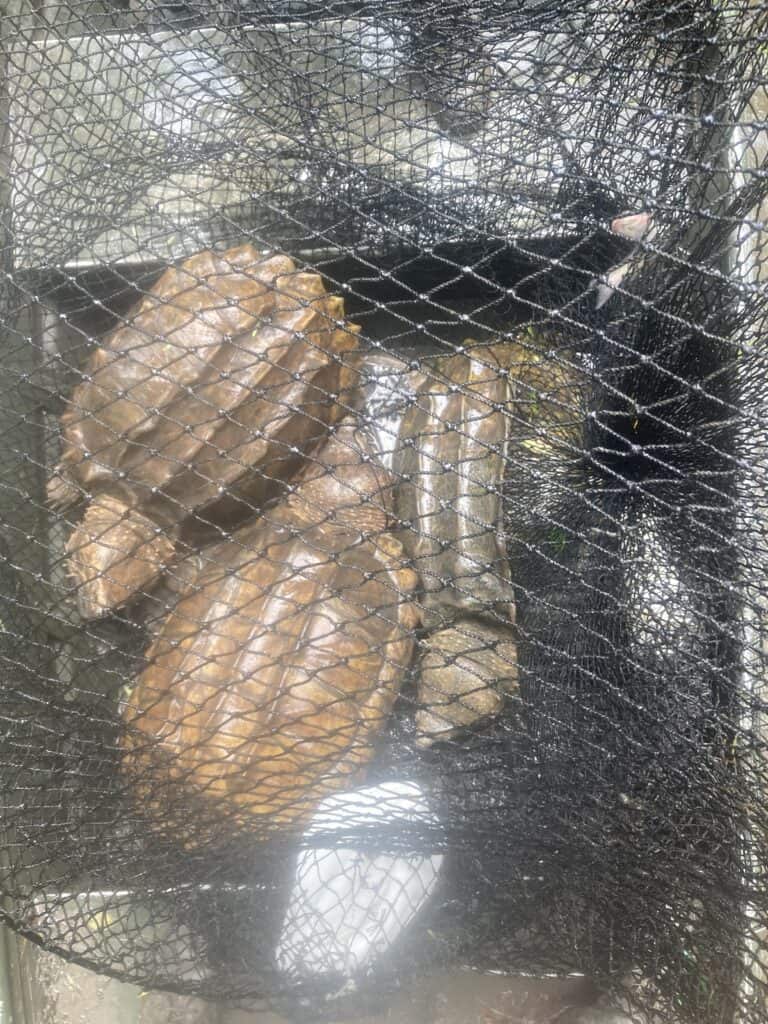
The surveys showed that the population in eastern Texas hadn’t changed much since the last survey—something nobody on the team expected. They captured over 200 turtles.
“The species range appears to be stable, given the study from two decades ago compared to the current one,” Rosenbaum said.
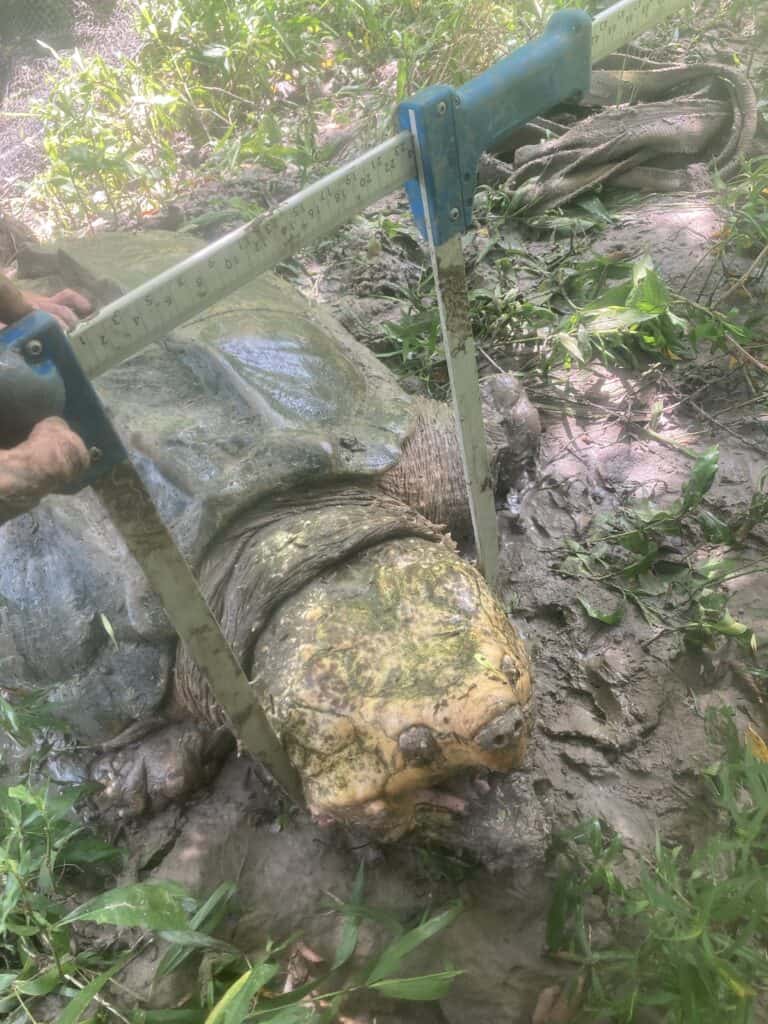
Since the species can live at least 70 years in captivity, though, two decades between surveys wouldn’t necessarily reveal much, he said. To better track population changes, researchers may have to wait another 30 years.
Still, it’s hard to complain about good news. “We can’t say it with certainty, but it appears that the species is doing pretty well in Texas relative to other states it occupies,” he said.
The status in neighboring Louisiana may be another story, however. Rosenbaum hopes the findings of this paper will help the U.S. Fish and Wildlife Service make a decision on the listing petition for the species.
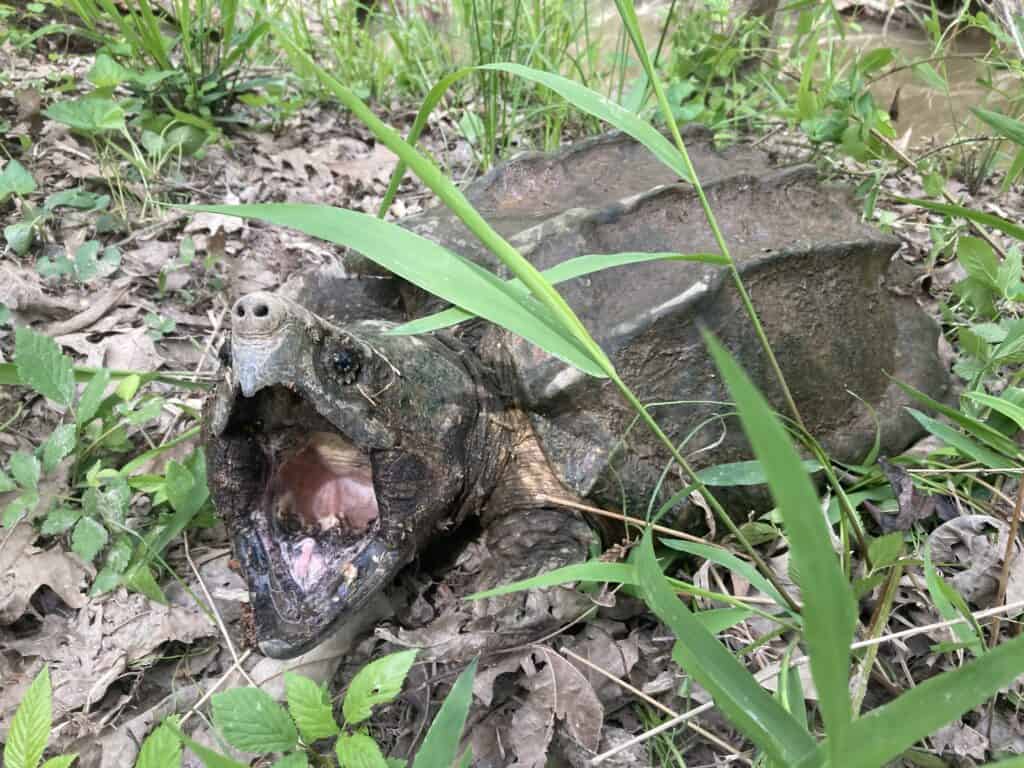
This article features research that was published in a TWS peer-reviewed journal. Individual online access to all TWS journal articles is a benefit of membership. Join TWS now to read the latest in wildlife research.
Header Image: Credit: David Rosenbaum



